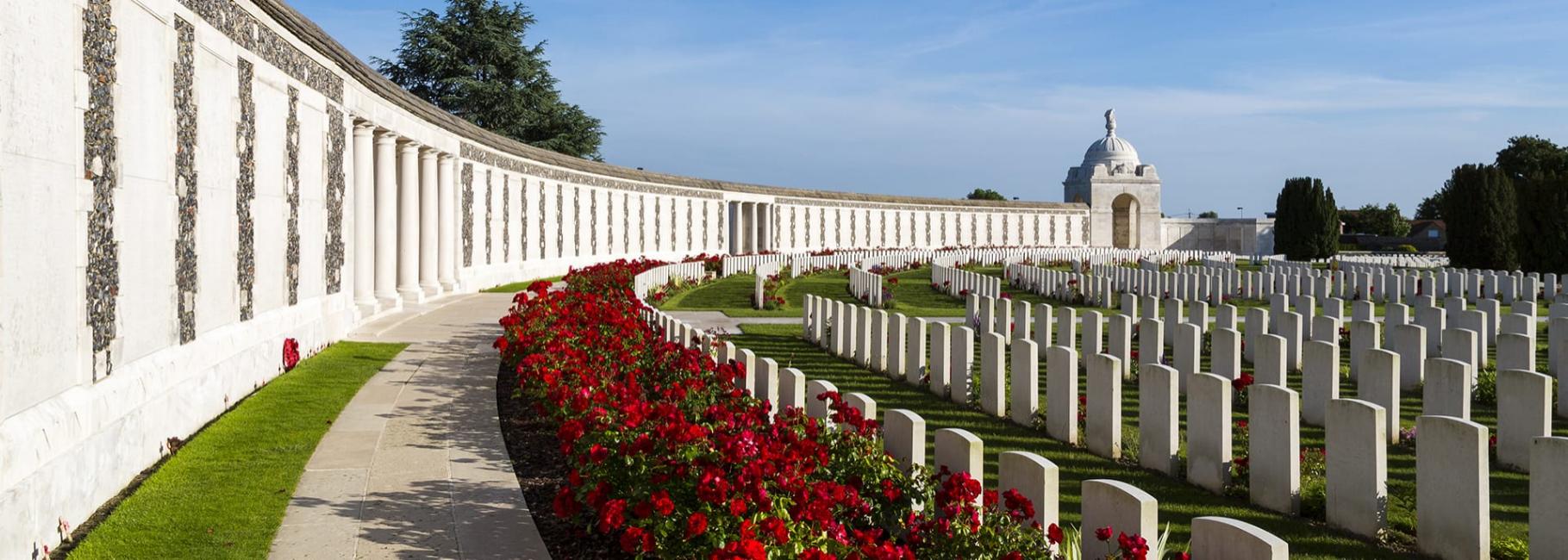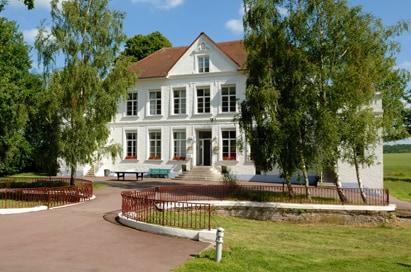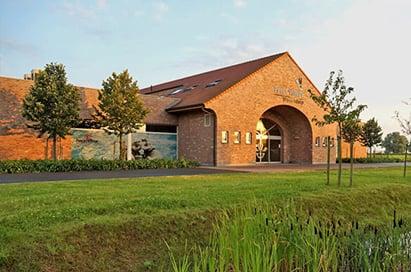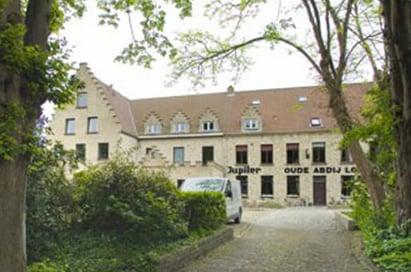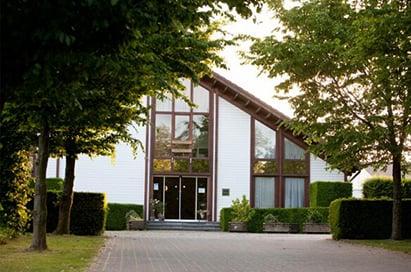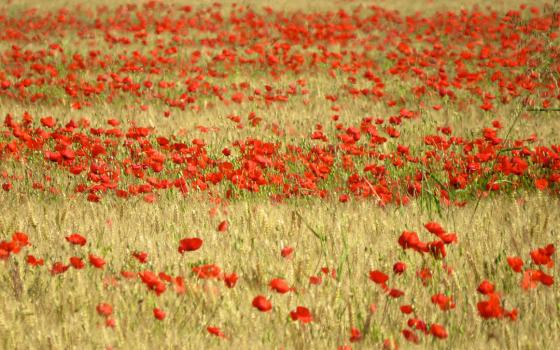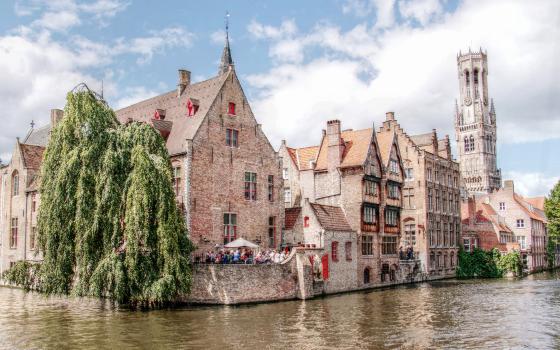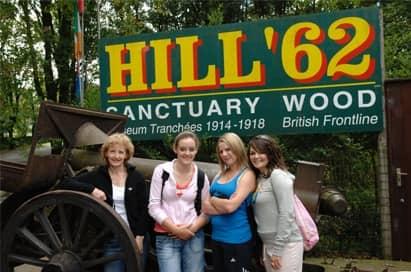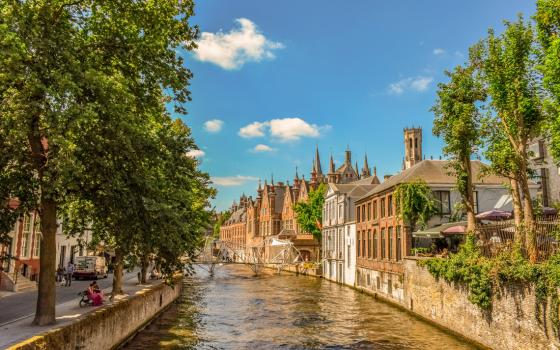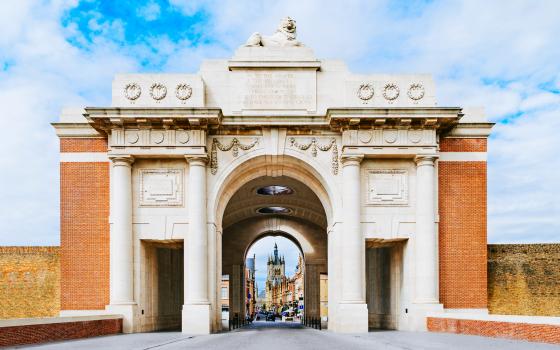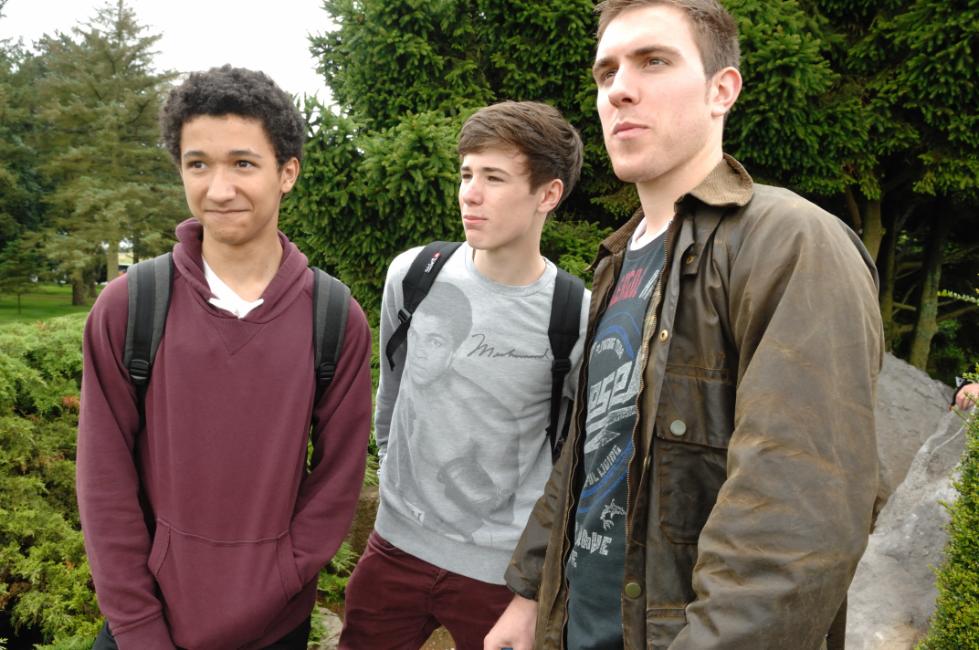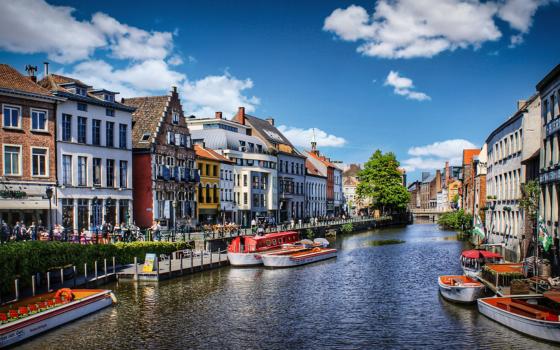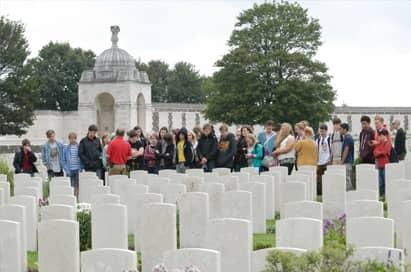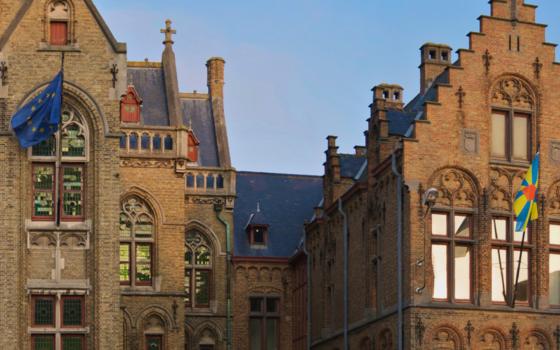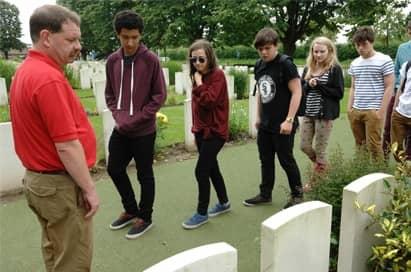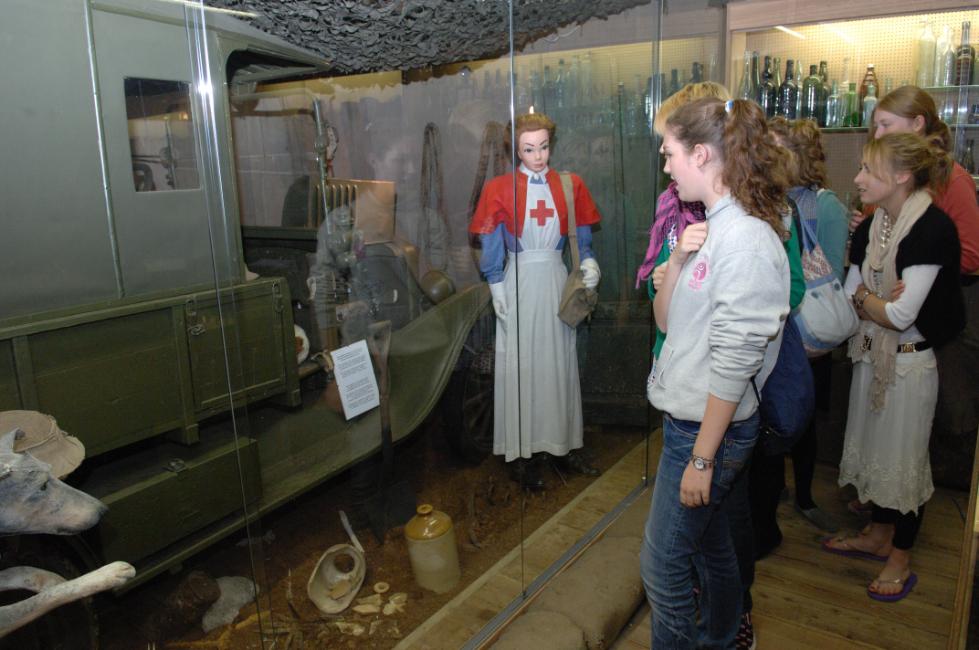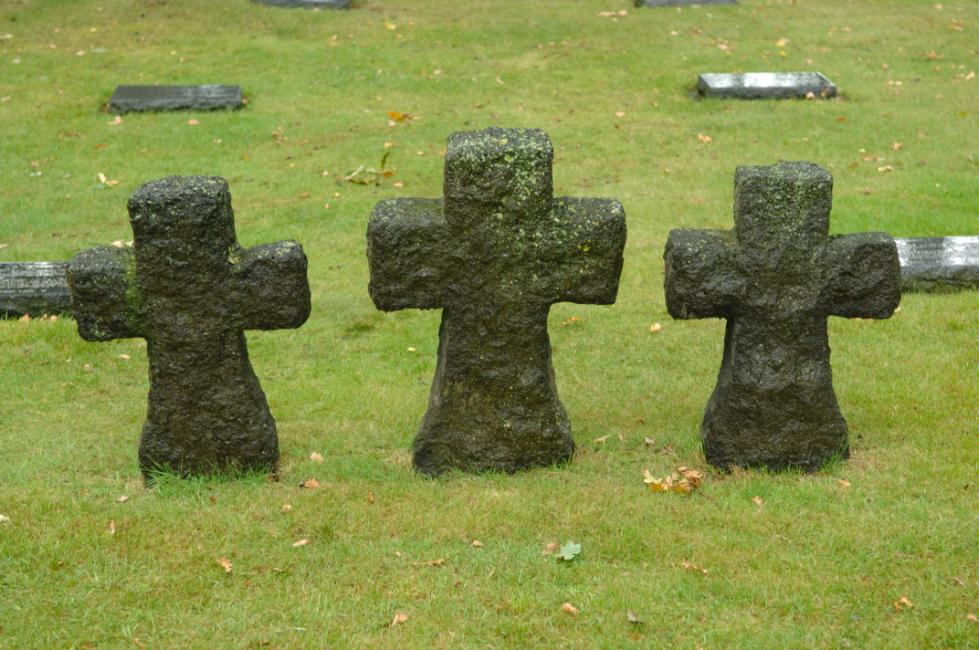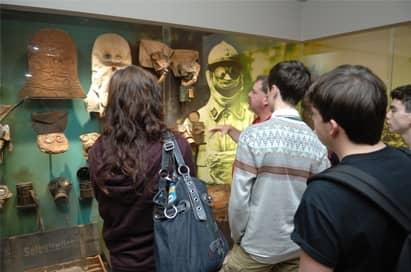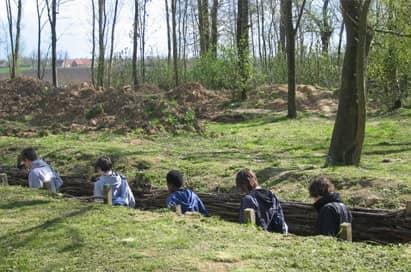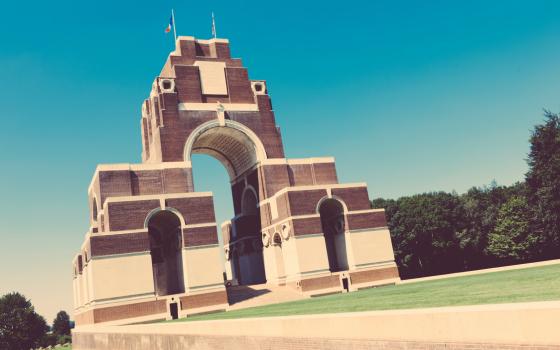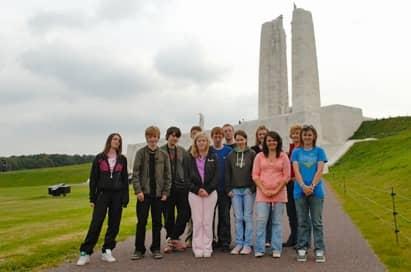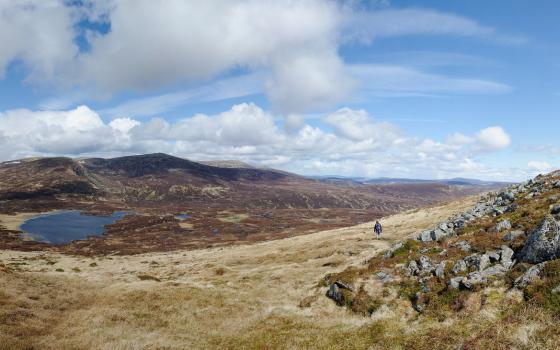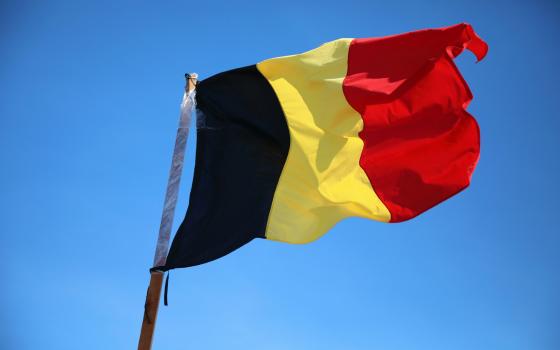History Trips to WWI Battlefields
The First World War was one of the bloodiest conflicts ever historically recorded and one of the largest wars in the world. The "Great War" as it was known was partly responsible for massive political changes that have stood strong to this day and the courage of the soldiers on the Battlefields of WWI is well documented.
School trips to the WWI Battlefields will give your students a brilliant educational opportunity to really comprehend the events of 1914-1918 and even follow a personal story. This educational tour will take you to some of the world’s most famous battle grounds, memorials and cemeteries in the Somme, Ypres and Verdun locations.
Prices start from£439pp
Popular itinerary
Our sample itinerary provides you with an idea of the visits you can cover during your trip. We can tailor-make an itinerary to support your specific learning outcomes.
| Morning | Afternoon | Evening | |
|---|---|---|---|
| 1 | Morning departure from school | En route visit to Vimy Ridge Memorial & Notre Dame de Lorette Cemetery | Check into accommodation. Evening meal and local orientation. |
| 2 | In Flanders Field Exhibition, Talbot House, Menin Gate, Lille Gate & St George’s Church | Croonaert Wood & Sanctuary Wood, Tyne Cot British Cemetery & Langemark German Cemetery | Meal at a restaurant in Ypres. Last Post Ceremony at the Menin Gate |
| 3 | Albert & Lochnagar Crater, La Boisselle | Deville Wood, Thiepval Memorial & Visitor Centre. Pass by Ulster Tower en route to Newfoundland Memorial Park, Beaumont Hamel & Serre Pals Memorial | Evening meal |
| 4 | Visit to Poperinge | Transfer to Calais, board Ferry/Eurotunnel to Dover | Arrive back in the UK |
- 1
- 2
- 3
- 4
| Morning | Morning departure from school |
|---|---|
| Afternoon | En route visit to Vimy Ridge Memorial & Notre Dame de Lorette Cemetery |
| Evening | Check into accommodation. Evening meal and local orientation. |
| Morning | In Flanders Field Exhibition, Talbot House, Menin Gate, Lille Gate & St George’s Church |
|---|---|
| Afternoon | Croonaert Wood & Sanctuary Wood, Tyne Cot British Cemetery & Langemark German Cemetery |
| Evening | Meal at a restaurant in Ypres. Last Post Ceremony at the Menin Gate |
| Morning | Albert & Lochnagar Crater, La Boisselle |
|---|---|
| Afternoon | Deville Wood, Thiepval Memorial & Visitor Centre. Pass by Ulster Tower en route to Newfoundland Memorial Park, Beaumont Hamel & Serre Pals Memorial |
| Evening | Evening meal |
| Morning | Visit to Poperinge |
|---|---|
| Afternoon | Transfer to Calais, board Ferry/Eurotunnel to Dover |
| Evening | Arrive back in the UK |
Price Shown includes
- Return Coach Travel (based on 40 passengers)
- 3 nights Full Board Accommodation
- Specialist Group Travel Insurance
- Bespoke itinerary planning service
- Free Place Ratios
- Online trip organiser & Travel App
- 24/7 support whilst you are away
Places to Stay
WWI Battlefields
Study Themes
Curriculum Topics Key Stage 4
- Conflict & Tension, 1894-1918
- First World War: 1914-1918
- Medicine, Injuries, Treatment and Trenches: 1914-1922
Curriculum Topics Key Stage 5
- The impact of war: 1914-1922
- Origins of WWI: 1900-1914
- The Changing Nature of Warfare: 1792-1945
- The British experience of warfare: 1790-1918
We Make Trip Planning Easy
- Day to day support and advice from our team of travel experts
- Easy-to-view online tour quotation
- Market-leading trip organiser portal, My Tour Manager
- Free Resources and templates to help launch your trip
- Email reminders to keep you on track
- Free and completely personalised Travel App to access your information on the go
- Risk Assessment advice so you can make an informed decision on every tour component
- Teacher Inspection Visits
What You Say
The itinerary was really well planned and was exactly what was asked for. It was really lovely to follow the story of one person throughout, and this really helped to bring the battlefields alive for the students. CTC Kingshurst Academy
Simon (our guide) was very knowledgeable and had a great understanding of student needs. The advice and support from Laura was fantastic, and no question was ever an issue. I would highly recommend European Study Tours to all other organisations. Churchill Community College
Simon was wonderful with the students. He was flexible in the programme, and we incorporated a couple of extra stops to visit graves and memorials of some of the old pupils of our school. Handsworth Grammar School
The trip went like clockwork, and there were no issues at all. I would have no hesitation in working with you again. Pentrehafod School
It was just fantastic!!!! We would have no problem booking with you again - once we were in the UK, the service was just outstanding in every respect. You made planning a trip so far away easy, which took away the stress and having a daily itinerary meant we knew what was happening and when. Freyberg High School, New Zealand
As always, the planning from EST to ensure a smooth transition through this part of the journey was impeccable. The itinerary was as was discussed and once again the team at the Peace Village and at EST (in particular Sarah) ensured that everything ran smoothly. Students are provided with leisure facilities and sports equipment as well as being able to use the well-equipped and spacious rooms. Once again the visits organised by Sarah and the team at EST were ideal for our educational needs and we were particularly fortunate to be able to attend a military funeral for an 'unknown soldier'. It is important to note that for teachers, school trips are very stressful although rewarding and beneficial to students and knowing that the EST team are on hand to support at all times and are meticulous during the planning stages is very comforting. However the most important reason for my returning to EST each year is that the staff see their work not only as providing a service but also delivering the best quality experience for all clients. Both Lynsey and Sarah, along with the rest of the team, are diligent, efficient and helpful staff who are also a pleasure to speak with and I can not thank them enough for their support throughout the visits. Churchill Community College

